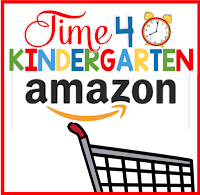Math Manipulatives Every Teacher Needs
If you teach kindergarten, chances are you use math manipulatives. Students need hands-on opportunities to learn math concepts. Providing math manipulatives helps to reinforce the concept being taught.
This article contains affiliate links. I may make a small commission from these links at no cost to you
I love teaching math. As a learner, math was always a struggle for me. When I became a teacher, I needed to find ways to engage my students in wanting to learn math. I needed math time to be fun and engaging. When I used manipulatives to teach a math concept, my students were engaged and successful at mastering the concepts.
The list below is a variety of math manipulatives that can be used in the primary classroom.
Math Manipulatives
- 2-sided counters
- Animal Counters (teddy bears)
- Atrribue Bbocks
- Base 10 blocks
- Balance scale
- Buttons
- Cards
- Clear chips
- Clocks
- Coins
- Counters (red and yellow)
- Counting bears
- Cuisenaire Rods
- Dice
- Dominoes
- Flash Cards
- Game Chips (translucent counters)
- Geo Blocks
- Geo Boards
- Judy Clocks
- Linking Chains
- Linking cubes
- Money
- Number Lines
- Pattern Blocks
- Place Value Chips
- Rekenreks
- Rulers
- Snap Cubes
- Solid Shapes
- Spinners
- Square Tiles
- Tangrams
- Ten Frame Cards
- Tiles
- Timers
Do you need all of these to be successful at teaching math. The answer is no, howwever having many of these math manipulatives available to your students during math time can be very beneficial.
Kids are more engaged when their learning involves a hands-on component. Math manipulatives provide many opportunities for hands-on learning. Using math manipulatives during a math lesson helps students make connections to the concepts being taught. When used effectively, math manipulatives make abstract ideas concrete. The outcome results in students gaining a deeper understanding of mathematical concepts.
My 5 Favorite Math Manipulatives to Use in my Kindergarten Classroom and Why
- Dice- Dice are a necessity for hands on math learning. They can be used for subitizing, counting, adding, and center games.
- Snap Cubes- Snap cubes/linking cubes can be used for counting, patterns, addition, subtraction, measurement, comparing numbers, sorting, one more/one less, and so much more. These cubes are so versatile and kids love linking them together. They are also a great fine motor tool too.
- Two Sided Counters- These two color counters usually red/yellow are great for teaching number sense and number operations. They can also be essential tools for teaching counting addition, subtraction, and patterns.
- Pattern Blocks- These colored small shaped blocks can be used to teach sorting, patterns, geometry and even fractions. Their colors are consistent between shapes which practically invites students to be creative, creating fun designs, patterns and larger shapes.
- Place Value Blocks- Understanding place value can be very difficult for young learners. Having place value blocks/base ten blocks can be very beneficial for making concrete connections and understanding. These blocks can be used for counting, number concepts addition and subtraction.
Most of these can be purchased through Amazon fairly inexpensivly.
There are of course many more then pictured above. if you want to see more math manipulatives you can click over to my Amazon Store. There I have an entire section just for primary math manipulatives that are perfect for children in Pre-school through second grade.
Well, that is my list of my top 5 favorite math manipulatives to use in the primary classroom. What are your favorites? Did I forget any? Be sure to pin the image below so you have a reference to all of the math manipulatives mentioned above.








